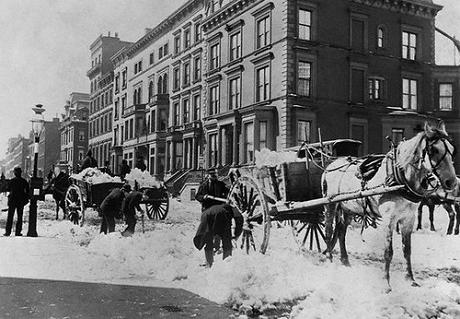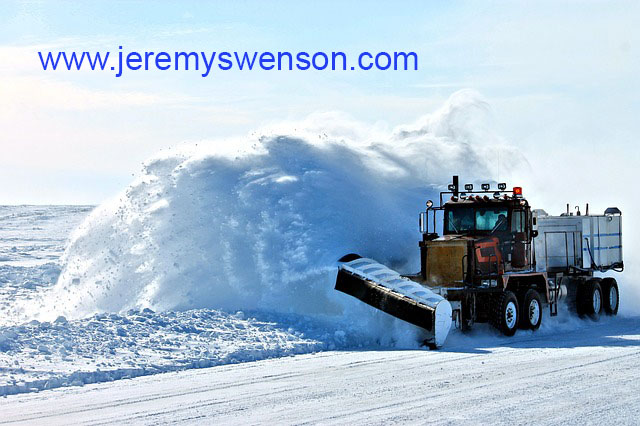BLOG NUMBER 12.67
The History of Snow Removal
If you’re buried under a ton of snow as many people are this time of year, and you need to go out for work or shopping or whatever, you’re probably happy when the snow plows come and clear the roads. But what did people do before motorized snow plows?

Before snow plows were mounted on motorized vehicles horses were given the task of pulling them along to clear roads for other horse-powered conveyances. The problem with horse-drawn plows was that while horses are good at pulling, they don’t push equipment very well and the horses had to trudge through the snow before they could plow it off the road. The first patent for a motorized snow plow was issued in 1913 and the industrial age boomed to see plows made of better and stronger materials.
In 1923 some inventors in Norway started building plows to be mounted on the front of automobiles, and apparently the idea was for each car to plow their own snow. As you can imagine this resulted in everyone just pushing snow out of the way but into the path of other automobiles and it was a chaotic situation. Luckily, municipalities saw the need for large-scale plowing and they started clearing roads on a large scale. When the interstate highway system was constructed in the United States, massive plows were built for clearing huge amounts of snow more efficiently.
In places where temperatures are very cold and massive snowfall occurs like Canada and northern Russia, jet engines have been used to melt and blow snow off roadways and train tracks.
If you’re clearing your own driveway and sidewalks you’re probably happy if you have a modern snow blower, because the first snow blower built in 1925 was apparently not very effective and difficult to start in cold weather.
Many modern conveniences are taken for granted, and we often think about how grateful we are for the modern snow plow. Today’s plows have not changed significantly over the past few decades except for some technical advances like GPS and sophisticated sensors.
Some snow removal equipment may be fitted with infrared cameras to look for something covered up in the snow ahead like a living human or animal.

Another tool in the arsenal for snow removal professionals is a pretty basic substance: salt. Someone somewhere figured out that snow melts ice but the more scientific reason is that salt lowers the freezing temperature of water. According to the Salt Institute, deicing roads with salt reduces accidents by 88 percent and injuries by 85 percent, and saves state economies an estimated $700 million per day.
Today’s snow removal professionals use a combination of weather monitoring, well maintained and properly operated plows, and chemicals to keep roads and parking lots clear, safe, and open for traffic and commerce.
DISCLAIMER: Information contained in this Website and blog is intended for informational purposes only and do not necessarily reflect the direct opinions, views or practices of Swenson Consulting or its consultants. The individuals who maintain this blog work for Swenson Consulting. The information, comments and links posted on this blog do not constitute legal advice. No attorney-client relationship has been or will be formed by any communication(s) to, from or with the blog and/or the blogger. All decisions relating to the content of the website blog belong to the blogger and management company responsible for the blog for the purpose of aggregating relative industry specific information related to snow removal.
